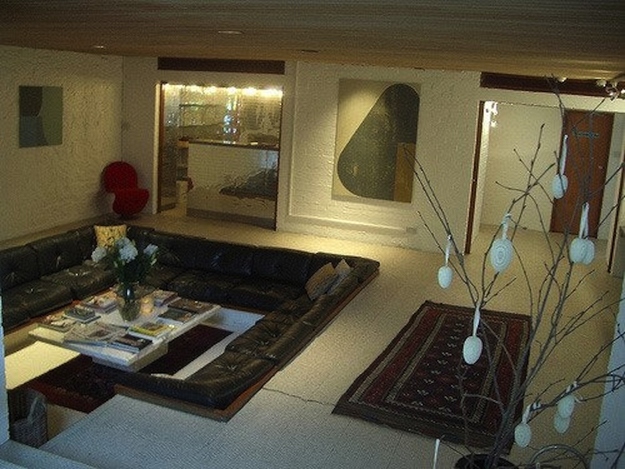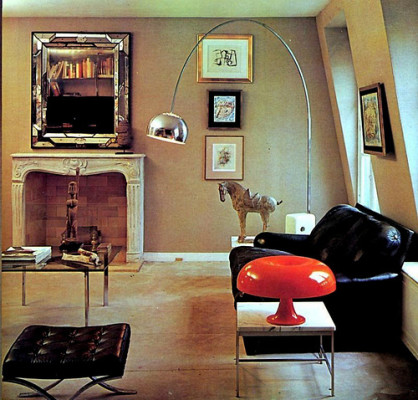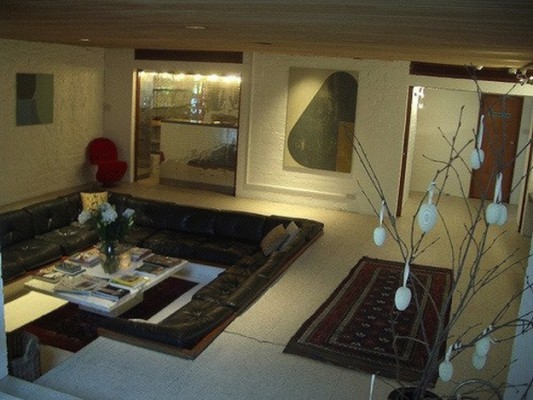The 1970s is notorious for its gaudy colours, mismatched patterns and taste that now looks far from modern. Here’s a look at some of the best and brightest of 1970s décor.
Bold blue, deep orange and white aren’t colours you’d usually want to mix. But in the 1970s it went together unexpectedly well. Lounges were the height of chic when covered in bright, mixed colours.
Ikea would have done a gold mine in the 1970s and pink walls with white wall cabinets looks like it could be in any modern day 21st Century home. What dates it is the brown, bulbous television screen, which is definitely a 70s knock back.
Sunken floors were the latest in lounge fashion in the 70s. Parts of the room would be dug out and sunk so that lounge areas would be stepped down into. Black and white remains as in fashion today as it was then 40 years ago.
Ski chalets were for the modernista of the 70s. Wooden features, big open fires with large stark overhangs, sunken lounge areas and high vaulted ceilings all played a part in creating a ski lodge vibe. 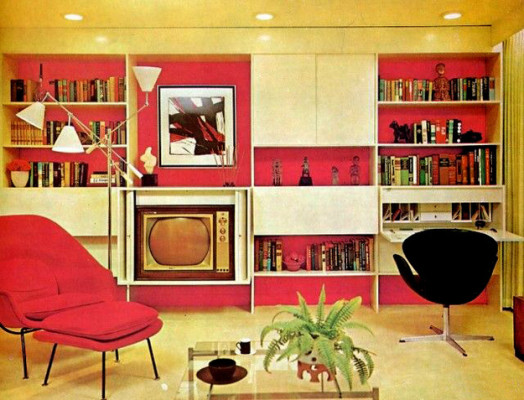
Even in central London’s 1800s terraced blocks, the 70s came to town. Plush floor cushions instead of a sofa would give the room an Asian feel. While ceiling lighting and brightly coloured wall hangings would adorn the surrounds. A hint of the 1800s could escape in the Victorian fireplace.
The mix of old and new is as relevant today as it was in the 1970s. Mixing modern furniture, art-deco accessories and artworks with high vaulted Victorian ceilings, a fireplace from more than 150 years ago makes for nothing but an interesting living environment.
The 1970s couldn’t be discussed without mentioning bubble chairs, which hung from the ceiling and look as uncomfortable as the fishbowl that they mimic. Meanwhile any artwork from Andy Warhol doesn’t go amiss in a 1970s lounge area.
The hanging furniture theme really took off in the 70s, and moved from chairs to full on sofas. The swinging sofa in the middle of the lounge was the most relaxing place to spend a Sunday afternoon.
Practicality was also the sound of 70s décor. Functional kitchens with wooden or plastic coated cupboards and work tops, alongside dining areas adorned with plastic chairs and tables that wouldn’t seem odd in Sindy’s playhouse.
Shading was the 70s alternative to a rainbow of bright colours. Sticking with one colour and featuring all shades, from light to dark, meant that you were the god or goddess of interior design. Not only would it feature on the walls, ceiling and floor, but all the furniture and accessories would also be in the same colour.
Matching your bed covers with your bedroom décor and following the design all the way through the living room would most certainly be a sign of bad taste now. But in the 70s it would put a bachelor at the top of the wanted list.
If you had enough room for a conservatory, white was the colour to go for. White window panes, white floors, white seating or sofas, all highlighted with hints of green from a few occasional plants. (Buzzfeed)
Clean lines and jutting corners invaded modern 1970s homes. Overhangs into downstairs lounge areas would give a cutting-edge feel to wide-open ceilinged living areas. A mirror-topped table was the highest of fashion accessories. 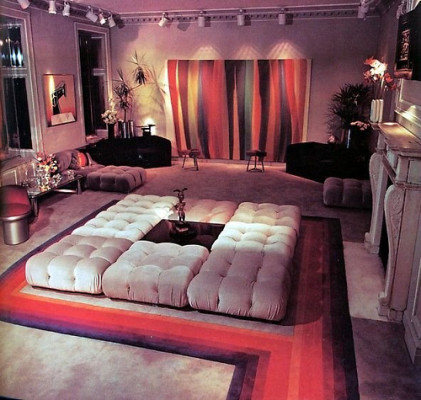
Pattern floors tend to close a room in, but in the 1970s patterns were everywhere. The best way to use them was to make the pattern the rooms feature and then add plain white or cream furniture and walls, making the flooring jump out.
Reception areas in the 1970s could almost look the same today, with leather sofas, magazines strewn across low coffee tables and works of art that no one has any idea of what they are.
A round shaped room is most unusual, but the contours were highly sought after in the 1970s. Perhaps reliving the 2001 Space Odyssey, lounges of the tubular shape would have been something reminiscent of Austin Powers.
